Pool Meadow, pictured above, adjoins that part of the Common which lies next to the Worcester road and below the children’s playground. The former pool was reportedly a source of fish for the nearby castle, of which only earthworks remain, while in later times the water was used by the nearby Bliss tweed mill, now closed. Sadly, it is today choked with horsetail, which is almost impossible to eradicate.
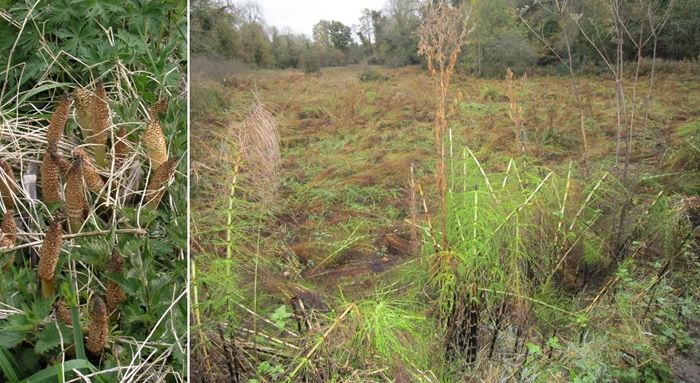
Pool Meadow horsetail in spring and autumn
Horsetails can be considered living fossils. This group of plants is what is left of a group of plants that were as thick as forests and had relatives as big as trees that flourished during the Devonian period approximately 350 million years ago.
The path which now circumnavigates Pool Meadow is popular with strollers, joggers and dog-walkers. It previously ran the length of the pool on the west side, alongside the Common Brook, and continued on to the Common, but on the other side and at the north end was impassable due to dense scrub and shrubbery blocking it. We cleared this to give users the option of going right round the edge of the meadow.
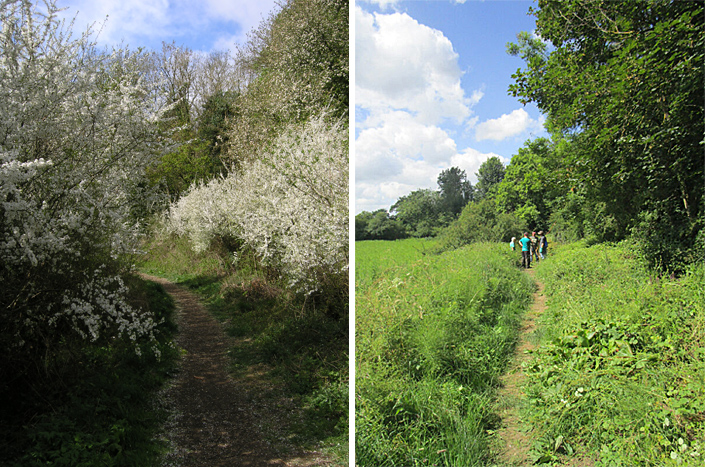
Parts of the Pool Meadow path in spring and summer
From the town there is access down steps from the dog exercise area next to the Recreation Ground; from Clay Lane (aka Watery Lane), which is a track downhill from Church Lane; and along a footpath which links Pool Meadow with the Common. We also keep this path open by cutting back vegetation including brambles.
Green Gym keep the course of the brook clear of obstructions to the flow, and the path clear of encroaching vegetation and overhead branches hanging too low. Invasive, shallow-rooted Himalayan Balsam grows rapidly and densely along the bank of the Brook, outcompeting native plants. When it dies back in the winter, it leaves banks bare and more susceptible to erosion by water flow and rainfall. In summer, we pull up as much as possible, as time allows, to give native plants a chance to fill the gaps. These include the wild yellow iris, shown below mixed with some of the Pool Meadow horsetail.
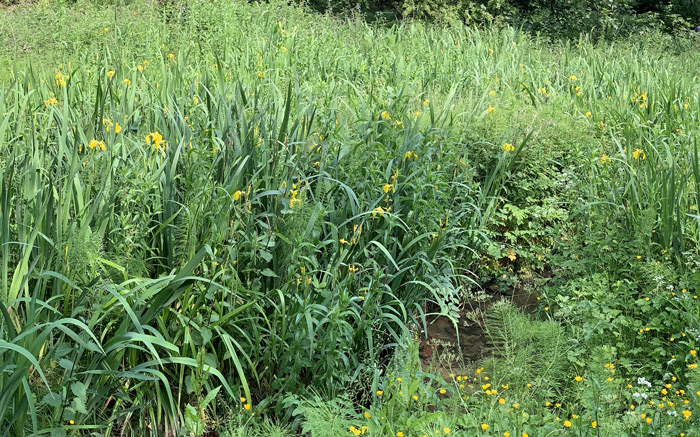
At the “castle mound end” of the path, where it meets the aptly named Watery Lane, erosion after heavy rain brought us to attempt the construction of a channel to divert the water off the path, as shown below, and this has been successful.
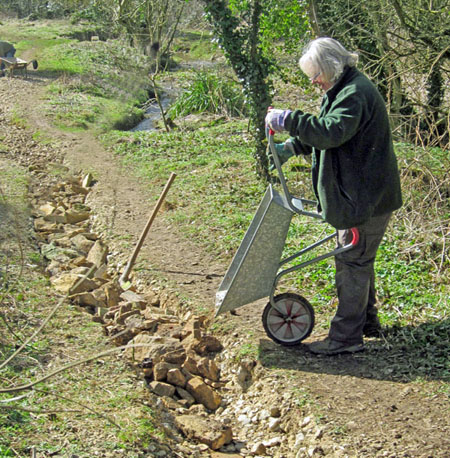
Repairing the eroded footpath.
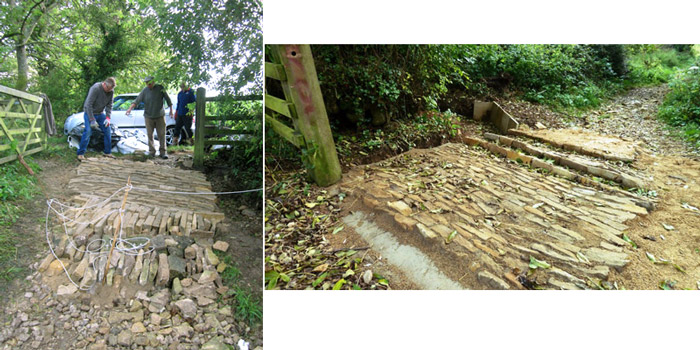
We designed and built a flood diverter to combat further path erosion.
Parts of the path can get very muddy in very wet weather and especially in winter. We are provided with piles of woodchip generated by tree surgeons and tipping this along the path improves the situation considerably.
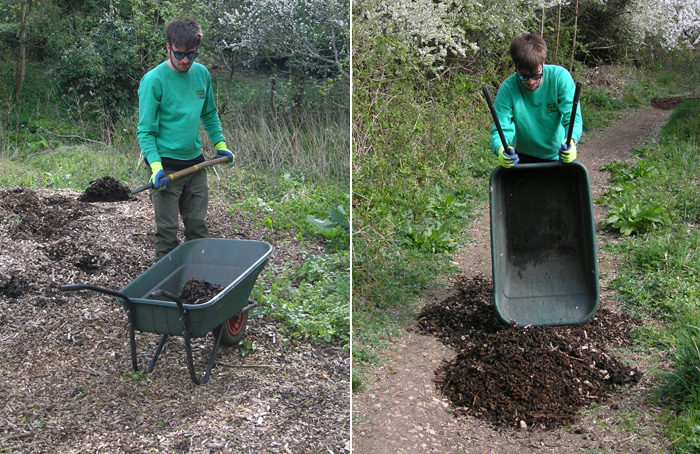
While it seems impracticable to put the “pool” back into Pool Meadow, we aim if possible to create a small wetland area at southern end of the site, which is the lowest point, and are digging out ditches to try and channel to the spot water which rises close to the surface in periods of wet weather.
